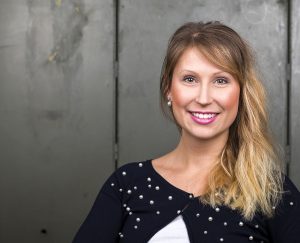Svenja Meier – Finance
Bei Kinzo seit 2017

Hey Svenja, tell us about your early days at Kinzo…
What has changed in the time since you joined Kinzo?
Jumping back – you mentioned Projo, could you tell us a bit more about the system and your involvement in it?
I started working at Kinzo at the same time, so to speak, when the decision was made that we would participate in a new project „Projo.“ Kinzo was one of the three pilot clients, in addition to D/Form and Hillig Architekten. It was founded in 2016 by Benedikt Voigt, a Berliner by choice, with the goal of developing an all-in-one solution specifically for interior architecture offices – which so far, he has succeeded in doing very well. At that time, we decided to co-design and build the online-based app as a pilot customer, because with other tools we would have had to cut back here and there in terms of usage, and it wouldn‘t have been just one tool, but probably several (we would have also had to continue using our great self-made Excel files ?
Projo is a complete package for us. We can use it to record the working hours of all employees, including managed working time and vacation account. We issue HOAI and other offers via Projo, from which we can set up a project structure and monitor, in addition, billings from travel expenses up to company-wide controlling. Projo as a program is not yet completely finished, but for us this means that we can continue to contribute our ideas; in addition, monthly user group meetings take place in which new features are discussed, and the application is optimized together with other users and the now four-man team.
Are there other things that have made working at Kinzo easier or better structured? Maybe something that has changed in the last four years that is now indispensable?
You did further training in order to be an instructor for those doing vocational apprenticeship in your field. What did you learn from that experience?
As one of the few at Kinzo who doesn‘t have an architecture background - do you still get excited about the projects?
Favorite project?
Can you confirm that projects always take longer and become more expensive than originally planned?